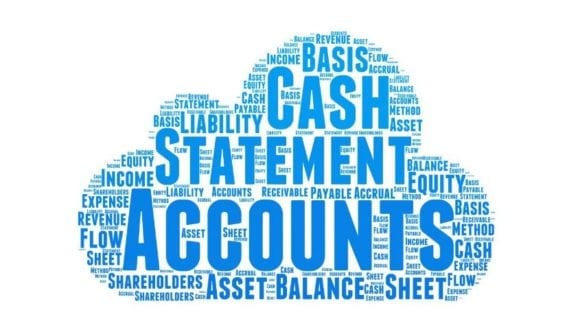Tips for making the financial part of your business plan a success

The working capital requirement (WCR)
13 ส.ค. 2020The working capital requirement (WCR) is a very important indicator for companies. It represents the short-term financing needs of a company resulting from cash flow discrepancies (disbursements) and receipts related to operational activity.
What is the WCR? When and how to calculate it? How to finance it at the beginning of the activity? How to interpret it? How to master it? What are the ratios related to this one?
What is the WCR ?
By definition, the working capital requirement (WCR) represents the amount that a company must finance in order to cover the need resulting from cash flow discrepancies corresponding to the disbursements (expenses) and receipts (receipts) related to its activity.
THE WCR represents:
- A claim, although acquired and certain, is generally not settled immediately by the client;
- A stock not sold immediately and items remaining in stock for a longer or shorter period of time before being sold.
These different lags will generate a financial need for the company to be financed, either by the negotiated settlement time with suppliers, by the working capital or by the treasury.
Why calculate your WCR?
The WCR must be calculated in the situation of starting a business or taking over a business.
It represents a key element of the financial part in the business plan. This is also one of the most important calculations to make when starting an activity (as well as the estimation of investments) because bad estimations of this notion is unfortunately one of the main causes the disappearance of young companies.
Throughout the life of the company, the WCR is an indicator of the financial health of a company. A WCR that explodes is a sign of illness that can very quickly lead to irremediable cash flow difficulties for the company. It can be calculated periodically (every week, every month, every quarter, every six months or every year) and above all, it must be compared and its evolution must be analyzed: has it deteriorated? If so, do we know why? How to straighten it?
How to calculate your WCR?
The WCR is obtained thanks to the data appearing in the balance sheet . It represents the difference between current assets and current liabilities:
WCR = Current Assets – Current Liabilities
In the complete calculation formula, the WCR is constituted by the amount of the receivables, increased by the amount of the stocks and reduced by the amount of the debt supplier. Here is how to calculate the WCR:
WCR = Average Outstanding Trade Receivables + Average Stocks – Average Outstanding Trade Payables
If the amount obtained by the calculation is negative, the WCR represents a resource for the company; we also talk about working capital resources. This particularly the case for catering or large-scale retailers (these companies usually cash their sales and pay their supplier after a settlement period).
It is also possible to calculate the WCR in days of turnover:
WCR (in days of turnover) = [WCR / annual turnover (excluding taxes)]*360
How to interpret your WCR?
When the WCR is greater than 0, the mining jobs are higher than the resources of the same nature. The company must then finance its needs in the short term, either through working capital or short-term financial debts (current bank overdrafts, ie bank overdrafts),
When the WCR is equal to 0, the operating resources cover the jobs in full. The company has no financial need but has no financial surplus.
When the WCR is less than 0, the jobs are less than the resources. No financial need is generated by the activity and the surplus of resources generated will feed the net cash of the company.
How to finance your WCR at the start of the activity?
Once the WCR is determined, and if it is positive, it is necessary to finance it. For this, you can use different sources of financing:
- Bank overdrafts: for small financial needs, it remains one of the preferred solutions as it is a short-term financing method;
- Contributions in current accounts: these are sums made available to the company by its partners. They are eligible for repayment at any time and may be compensated at a rate determined by the Associate Community. This type of contribution is generally granted in the short term.
- Working capital: A fraction of the WCR can be financed by the surplus of long-term resources over long-term needs. It should be noted that the main sources of long-term financing consist of capital contributions and bank loans. Otherwise, it will contribute to degrade the net cash position of the company. Generally speaking, it is considered that you must finance, when creating your activity, the WCR as well as the fixed assets (investments in durable goods) necessary for the exploitation of the activity.
Financial ratios related to the WCR
The WCR is influenced by 3 variables:
- The payment term negotiated with suppliers,
- The settlement period granted to customers,
- The inventory turnaround time.
Here is the detail of the calculation of each of its ratios:
Payment period of suppliers – It corresponds to the payment terms granted to the company by its suppliers (generally between 30 and 60 days). This deadline must be negotiated with each supplier and it must not be neglected because it is essential.
How to calculate it ?
Vendor payment deadline (in days) = [Debtors Suppliers / Purchases T.T.C] * 360
Customer payment deadline – This is the payment period for products and services sold by your company (usually between 30 and 90 days). This data depends on your sector of activity and your type of clientele.
How to calculate it ?
Customer settlement period (in days) = [Trade receivables / turnover T.T.C] * 360 Turnaround time of stocks
The inventory turnaround time – This is the time between when a commodity, a product or service is purchased, and when that same good is resold. In other words, it is the average number of days an item remains in stock.
How to calculate it ?
Inventory turnaround time (in days) = [Average stock / cost of production or manufacturing] * 360
With Average Stock = (initial stock + final stock) / 2
(With production cost, manufacturing = raw materials, goods …)
How to control your WCR?
Controlling the WCR therefore implies acting on each of the three ratios presented below:
The payment period of suppliers: To control its WCR, it is necessary to increase the payment period obtained from suppliers. This must be negotiated between the company and its suppliers. In particular, it may justify its request based on order volumes.
The deadline for payment of customers: To control your WCR, you have to manage your receivables and lower the payment period to customers. This can be done by encouraging the cash payment that is to say by offering a discount encouraging customers to pay as quickly as possible.
Turnaround time of stocks: To control your WCR, it is necessary to decrease the rotation time of stocks. For this, the use of just-in-time stock management must be encouraged. Be careful, however, this mode of management can cause some inconvenience and in particular stock-outs due to a longer or shorter replenishment period.
Are you looking for Accounting Services in Thailand?
Do not wait until your WCR becomes a burden, contact our team of professional & expert advisors and let them help you in your monthly bookkeeping, payroll and audit activities!
เราภูมิใจที่ได้ให้บริการ




















